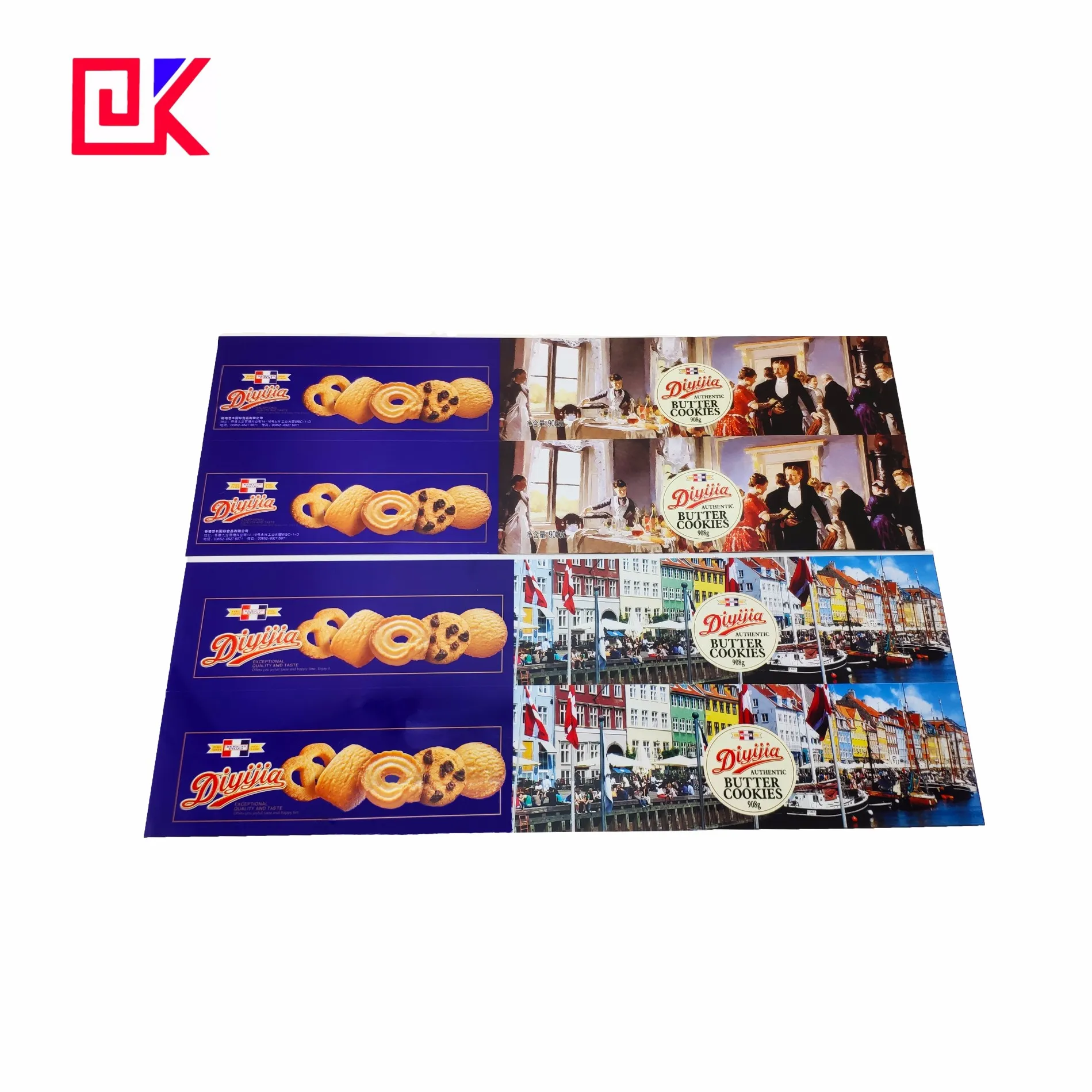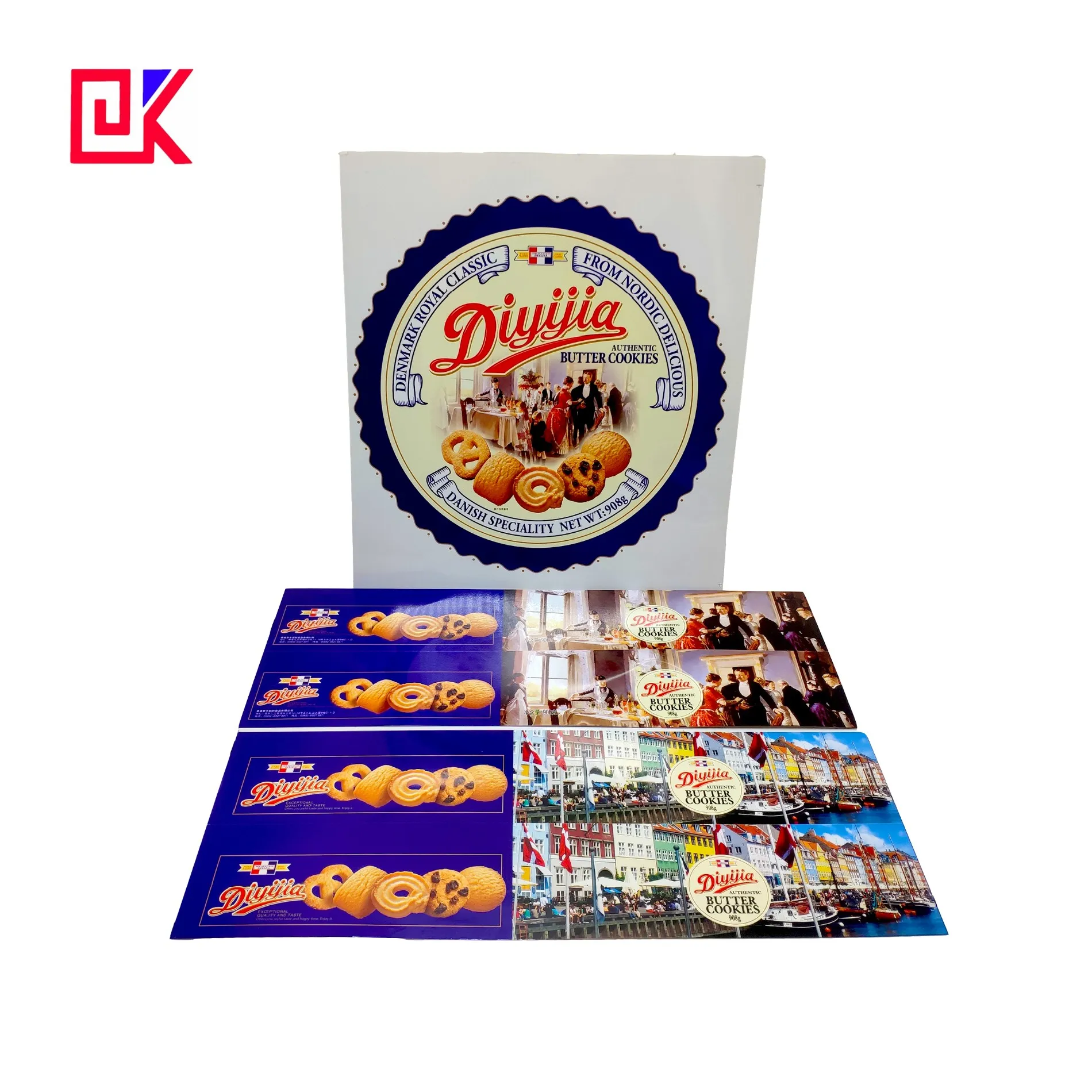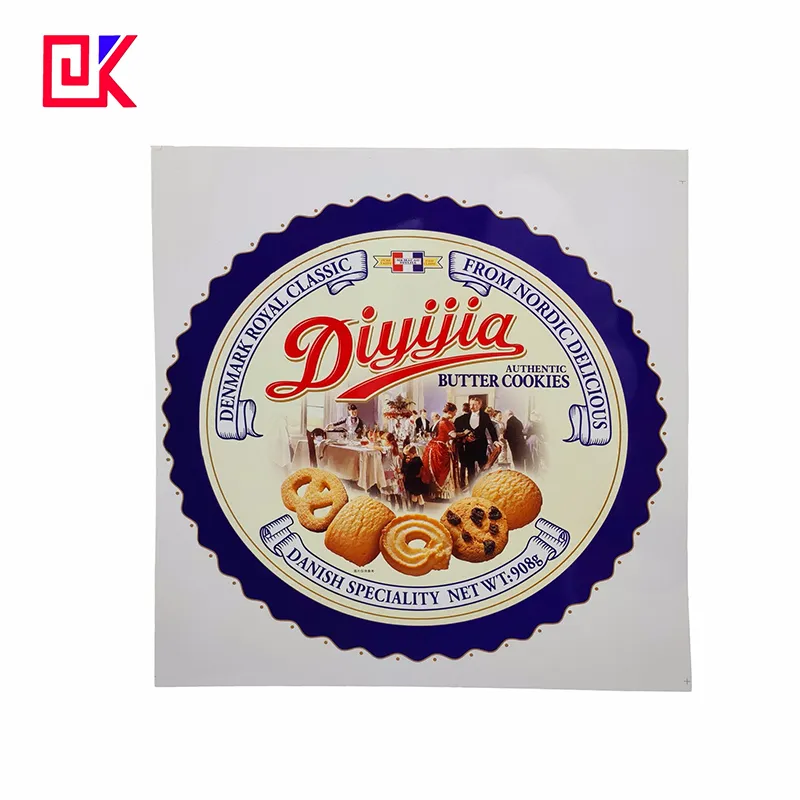Tinplate biscuit jars are widely used to store dry foods such as biscuits and candies because of their sturdiness, durability, beauty and good sealing. This type of can is popular among consumers because of its shiny metal surface and gorgeous printed design. Many people even use it as a decoration or secondary storage. However, with the consumption of biscuits and the repeated use of the jars, food residues, grease or dust will inevitably remain inside the biscuit jars, so cleaning tinplate biscuit jars is particularly important.
This article will explore in depth how to properly clean tinplate biscuit jars to ensure that they can maintain their beauty without compromising their anti-rust function. We will analyze in detail the key steps, precautions and how to maintain the quality of biscuit jars during the cleaning process.

What are the characteristics of tinplate biscuit jars?
Before discussing how to clean tinplate biscuit jars, we must first understand its basic characteristics. Tinplate (tinplate) is a metal material with a layer of tin on the surface of a steel plate. The tin layer mainly prevents the steel plate from oxidizing and rusting, and also has a certain degree of corrosion resistance. Tinplate has good physical strength and can withstand external pressure and collision. At the same time, its smooth metal surface is easy to print patterns and is widely used in food packaging.
Tinplate biscuit jars are usually covered with a protective coating, which can enhance the rust resistance of the jar and provide it with additional decorative effects. However, it is precisely because of this special structure that you need to be extra careful when cleaning tinplate biscuit jars, avoiding overly rough cleaning methods or using corrosive cleaning agents, otherwise it will damage the tin layer or coating, causing the jar to rust or damage the appearance.
What are the steps to clean tinplate biscuit jars?
Although cleaning tinplate biscuit jars may seem simple, you need to consider the characteristics of the material and the appropriateness of the cleaning method. Here is a step-by-step cleaning guide to help you effectively clean tinplate biscuit jars.
Preparation
Before you start cleaning, make sure you have the necessary cleaning tools and materials ready. Generally speaking, the following items are essential:
● Warm water: Warm water can help dissolve grease and stains, but the water temperature should not be too high to avoid damaging the coating of the jar.
● Neutral detergent: It is recommended to use detergents that do not contain strong acids, strong alkalis or bleaching ingredients to avoid corrosion on the surface of the tinplate. Common neutral detergents include ordinary kitchen detergents.
● Soft cleaning cloth or sponge: Do not use steel wool or hard brushes, which can easily scratch the surface of the tinplate and damage the protective layer.
● Dry towel: Used to dry the can immediately after cleaning to prevent residual moisture from causing rust.
Preliminary cleaning
Before formal cleaning, wipe the residue inside and outside the can with a clean rag or paper towel. If there are biscuit crumbs or other food crumbs left in the can, it is recommended to turn the can upside down and tap the bottom of the can to remove loose residues.
For some dry stains, you can gently wipe the surface with a clean soft cloth to prevent the stains from spreading further or penetrating into the gaps of the can in a wet environment.
Cleaning the outside
Cleaning the outside is relatively simple, but special attention should be paid to the printed patterns and coatings on the surface of the can. To avoid scratching the pattern or damaging the coating, the following steps are recommended:
● Soak a soft cleaning cloth or sponge in warm water and squeeze out any excess water, making sure the cleaning tool is wet but not dripping.
● Add a small amount of neutral detergent to the cloth or sponge and gently wipe the outside of the can. Be careful not to use too much force to avoid scratching the surface.
● For more stubborn stains, such as grease or sticky stains, you can wipe with slightly more force, but still need to maintain a gentle movement to avoid damaging the tin layer.
● After cleaning, wipe off any residual detergent on the surface with a clean damp cloth, and finally dry the outside of the can thoroughly with a dry towel.
Cleaning the inside
The inside of the cookie jar usually has some cookie crumbs or grease left, especially after long-term storage. Be particularly careful when cleaning the inside to ensure that no water stains and detergent residues are left. The specific steps are as follows:
● Soak a soft cleaning cloth or sponge in warm water and add a small amount of neutral detergent, and gently squeeze out any excess water.
● Place a sponge or cloth inside the cookie jar and gently wipe from the bottom, making sure every corner is clean. For stains on the corners, use a soft brush or cotton swab for detailed cleaning.
● After cleaning, wipe the inside repeatedly with a clean, damp cloth to ensure that there is no detergent residue, especially at the joints between the bottom and the wall of the jar.
● Finally, use a dry towel to thoroughly dry the internal moisture, paying special attention to the water droplets on the edge of the jar and the gaps at the bottom of the jar.
Drying and storage
After cleaning, ensuring that the tinplate cookie jar is completely dry is a key step to prevent rust. Any residual moisture may cause oxidation reaction on the surface of the tinplate can, eventually forming rust spots.
It is recommended to place the cleaned cookie jar upside down in a dry and ventilated place to dry naturally, and avoid placing it in a humid environment. If you need to use it as soon as possible, you can wipe the jar again with a dry towel to ensure that every place is dry.
When storing cookie jars, it is recommended to choose a dry, cool environment to avoid direct sunlight and humidity. A humid environment can easily accelerate the oxidation process of the tin can, causing rust.

What are the precautions for cleaning tinplate biscuit jars?
Avoid using strong acid and strong alkaline detergents
Although the tin layer on the surface of tinplate has a certain anti-corrosion function, it cannot withstand the erosion of strong acids, strong alkalis and other chemicals. Therefore, when cleaning, avoid using detergents containing these ingredients, such as bleach, detergent powder, etc. These substances will damage the tin layer and even cause chemical reactions in the parts of the can body that come into contact with food, which is harmful to health.
Do not use hard cleaning tools
When cleaning tinplate biscuit jars, do not use hard cleaning tools such as steel wool and hard brushes. Although these tools can quickly remove stubborn stains, they will also scratch the coating or tin layer on the surface of the tin can, causing it to lose its protective function and causing the can body to rust.
If you encounter stains that are difficult to remove, you can choose to wipe them with a soft cloth dipped in a small amount of edible baking soda. Baking soda is a mild detergent that can remove stains without damaging the metal surface.
Avoid soaking for cleaning
Although the tinplate biscuit can has a protective coating on the surface, long-term immersion in water may still cause the coating to fall off or water to penetrate into the gaps, causing the can to rust. Therefore, do not soak the biscuit can in water for a long time when cleaning. It is recommended to wipe it with a wet cloth to reduce direct contact with water.
High-temperature cleaning is not suitable
For convenience, some consumers may put the tin cans in the dishwasher or use hot water for cleaning. However, too high water temperature may damage the coating or pattern on the surface of the tin can, and even cause the can to deform. Therefore, when cleaning the tinplate biscuit can, high-temperature water and high-temperature equipment should be avoided. Hand washing is the best cleaning method.

How to maintain the tinplate biscuit can?
In addition to proper cleaning, daily maintenance of the tinplate biscuit can is equally important. Keeping the can dry and avoiding bumps is the key to maintaining the life of the tin can. If scratches or dents accidentally appear on the surface of the can, it is recommended to repair it in time or use other protective measures to avoid further expansion of the scratches or causing the tin layer to fall off.
If the cans are no longer used for food storage, they can also be used as storage containers for other items, such as stationery, handicraft materials, etc., and the service life of the tin cans can be extended through reasonable cleaning and maintenance.
Looking for a reliable metal packaging supplier? DKtinplate, based in Foshan, China, offers a wide range of tinplate products, including printed materials, aerosol cans, and custom packaging components. Our factory spans 50,000 square meters and is equipped with cutting-edge machinery like FUJI UV printing lines and high-speed production facilities. We provide high-quality packaging solutions for brands worldwide, with competitive prices and wholesale options. Whether you need bulk purchasing or tailored designs, DKtinplate ensures exceptional quality and service. Request quotes today and take advantage of our low prices and promotional deals.

